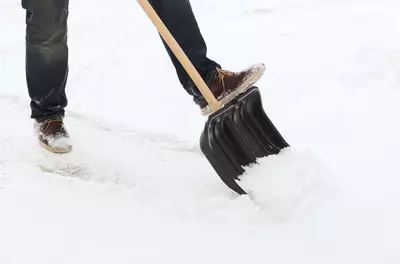
It’s that time of the year again. Days get shorter, nights get longer, and the semester’s work begins to pile up. For many people who live far from the equator, the combined stressors of this time of the year manifest as Seasonal Affective Disorder, or SAD.
What is SAD?
Seasonal Affective Disorder is a type of depression that emerges during the darker periods of the year. While we’re still not sure what the definitive cause of SAD is, research suggests that it is dependent on a number of factors, including genetics, a lack of sunlight, and an increase in stress.
According to the National Institute of Mental Health, SAD is characterized by a general “slowing down” of a person’s normal activities, increased sleep, decreased motivation, and weight gain. These issues can be compounded by the demands of being a college student, creating a vicious cycle: the decrease in energy leads to an inability to complete assignments or attend class, which creates shame and academic insecurity, which further drains energy and makes it more difficult to engage with school. The workload over the semester also tends to pile up right around the time that days begin to get shorter, thus increasing a student’s chances of experiencing SAD.
 Why is this happening?
Why is this happening?
Seasonal mood fluctuations have been recognized as a part of life for ages, and it’s likely that SAD serves some evolutionary purpose. Researchers have suggested a shift in how we view SAD—rather than as a weakness or abnormality, an article published in the Journal of Affective Disorders proposes that the mood disturbance caused by the change of seasons is an adaptive behavior that ensured the success of our species for millenia.
A stubborn remnant of our evolutionary past, the behaviors associated with SAD (social withdrawal, energy conservation, carbohydrate cravings) were beneficial for our ancestors, who were concerned about seasonal food scarcity and its natural companion, a decrease in energy. In other words, our bodies consume excess food and conserve energy to prepare for the long, arduous winter ahead.
Ways to deal with SAD

Get active.
Physical activity can benefit you in a number of ways, and you don’t need a gym membership to enjoy the mood-elevating effects of moving your body—even in the winter! Here are some ideas:
- Shovel your driveway or make a neighbor’s day by shoveling theirs
- Rearrange your living space
- Bundle up, put on your favorite music, and walk to class
- Volunteer at a food shelter in your community (this is also a great thing to have on a resumé)
- Go grocery shopping
- If you live in Minnesota, take advantage of our state’s natural wonders and go for a walk on a frozen lake!
- Try our physical activity assessment, then consider our goal setting activity to assess your readiness for change and work towards a healthier you.

Take comfort in knowing that you’re not alone.
According to a 2019 study by Nussbaumer-Streit and colleagues, it’s estimated that around 1.5-9% of the U.S. population is affected by SAD, with greater prevalence at higher latitudes.

Get a light-therapy box—or don’t.
A Cochrane review concluded that there is insufficient evidence for the effectiveness of light therapy as a preventive treatment for people with SAD. However, anecdotal reports of light therapy’s effectiveness are plentiful, and the review suggested that the decision for or against initiating light therapy should be strongly based on patient preferences.

Stay active socially.
Resist the urge to withdraw from friends and family. Loneliness can be fatal, and your personal relationships are invaluable to your wellbeing. Schedule time with people who cheer you up and make an effort to be fully present with them.
To hear a faculty member's perspective, read this short interview with Assistant Professor Jeannie Larson on SAD.
A final word from Taking Charge
Seasonal Affective Disorder may zap you of your energy and drive, but like many other ailments, it’s not entirely out of your control. Taking intentional steps to acknowledge and address it can go a long way in securing your mental health during the winter months. And try to remember that others around you are probably going through a similar thing—we’re all in this season together.
Learn more about Student Wellbeing. Student Wellbeing provides resources specific to college students and their wellbeing, especially around issues like stress, mental health, addiction, financial obstacles, and other barriers that prevent them from thriving at university and in life.
Davis, C., & Levitan, R. (2005). Seasonality and seasonal affective disorder (SAD): An evolutionary viewpoint tied to energy conservation and reproductive cycles. Journal Of Affective Disorders, 87(1), 3-10. doi: 10.1016/j.jad.2005.03.006
NIMH » Seasonal Affective Disorder. (2019). Retrieved 20 November 2019, from https://www.nimh.nih.gov/health/topics/seasonal-affective-disorder/inde…
Nussbaumer-Streit, B., Greenblatt, A., Kaminski-Hartenthaler, A., Van Noord, M., Forneris, C., & Morgan, L. et al. (2019). Light therapy for preventing seasonal affective disorder. Cochrane Database Of Systematic Reviews. doi: 10.1002/14651858.CD011269.pub2.


